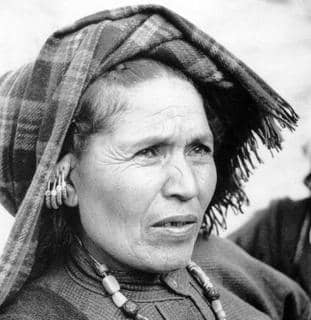Gaura Devi was a prominent Indian social activist who is best known for leading the Chipko Movement, a successful movement to protect forests in the Indian state of Uttarakhand. The Chipko Movement, which began in the 1970s, has since become a symbol of environmentalism and grassroots activism in India. In this blog, we will explore Gaura Devi’s life and legacy, her pivotal role in the Chipko Movement, and how her efforts helped shape the environmental movement in India.

Early Life and Education
Gaura Devi was born in the Chamoli district of Uttarakhand in 1925. She grew up in a family of farmers and had limited access to formal education. Despite these challenges, she was an avid learner and taught herself how to read and write. Her early life was marked by the poverty and hardships that were common in rural areas of India during that time.
At the age of 11, she was married to Meharban Singh. She faced a lot of problems after passing away of her husband when she was 22. She raised her son, Chandra Singh and made him a trader in Indo-China trade of that time.
Gaura Devi Role in the Chipko Movement
In the 1970s, the Indian government began granting licenses to private companies for commercial logging in the forests of Uttarakhand. This caused widespread deforestation, leading to environmental degradation, soil erosion, and the loss of habitat for wildlife. The local people, many of whom were poor and relied on the forests for their livelihood, were deeply concerned about the impact of this commercial logging on their lives.
It was in this context that the Chipko Movement emerged. The movement began in the village of Mandal in Uttarakhand in 1973 when a group of women, led by Gaura Devi, hugged the trees to prevent loggers from cutting them down. The act of hugging the trees, or “chipko” in Hindi, became a symbol of the movement and inspired similar protests in other parts of the region.

Gaura Devi played a crucial role in the success of the Chipko Movement. She was a natural leader and an excellent organizer. She mobilized women from the villages to join the movement, and her charisma and determination inspired others to join the cause. Her efforts helped to bring the issue of deforestation to the forefront of national attention and put pressure on the government to take action.
Awards and Recognition
In 1986 Gaura Devi was awarded the first environment-friendly award and was elected as the chairman of Dasheli Gram Swarajya Mandal over 30 other women groups.
The Chipko movement was awarded the Right Livelihood Award for its dedication to the conservation, restoration and ecologically-sound use of India’s natural resources.
Legacy and Impact
The Chipko Movement was successful in its aim to protect the forests of Uttarakhand. The Indian government eventually took notice of the protests and imposed a ban on commercial logging in the region. This ban remains in place to this day, and the forests of Uttarakhand continue to thrive.
Gaura Devi’s Efforts Saved India’s Forests
The Chipko movement also had a broader impact on the environmental movement in India. It inspired similar protests and campaigns across the country, and helped to raise awareness about the importance of protecting the environment. The Chipko Movement is now recognized as a landmark event in the history of Indian environmentalism, and Gaura Devi is remembered as a hero and a role model for her tireless efforts to protect the forests and the people who depend on them.
The godly soul passed away on 4 July 1991, at the age of 66. Gaura Devi efforts and sacrifices prove that women can achieve anything by standing together the greatest example of which can be witnessed by the world fame of Chipko Movement.
In Conclusion, Gaura Devi was a remarkable woman who played a critical role in the Chipko Movement. Her efforts helped to protect the forests of Uttarakhand and inspired a generation of environmental activists in India. Her legacy continues to inspire people around the world to fight for the protection of the natural world and the communities that depend on it.
You may also like this